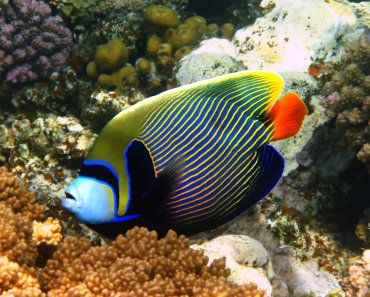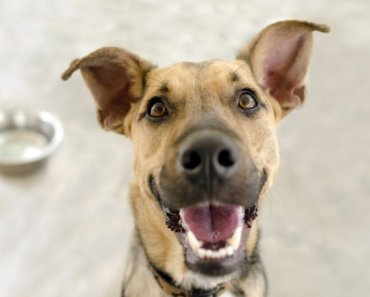From acupuncture to regenerative medicine, an integrative approach is an effective way to manage canine hip dysplasia and the osteoarthritis that often arises from it.
Hip dysplasia is the most common congenital joint problem in dogs. It affects several breeds, with a higher prevalence in larger ones. Some dogs with dysplastic hips will never show signs of disease, while others may be debilitated by severe osteoarthritis (OA) as a result of the condition. In either scenario, hip dysplasia is a lifelong issue. This article discusses an integrative multimodal approach to managing hip dysplasia in dogs, including the management of OA, using a combination of conventional and alternative therapies.
Treating and managing hip dysplasia and OA
1. Surgery
Four surgical procedures are used for treating dogs with hip dysplasia:
- Total hip replacement — can only be performed on dogs after the growth plate of the hip joint has closed. Total hip replacements are very expensive.
- Femoral head/neck osteotomy (FHO) — may be preferred if the dysplasia is on one side, and is a more affordable surgery that can be successfully performed by many veterinarians.
- Triple pelvic osteotomy (TPO) — is performed in dogs with hip dysplasia who are less than 2 weeks old, with the aim of reducing the future development of OA.
- Juvenile pubic symphysiodesis (JPS) — is also performed on young puppies by using electrocautery (with an instrument that’s electrically heated) to fuse the pubic symphyseal growth plate (the pubic symphysis is a joint sandwiched between the left and right pelvic bones).
2. Physical therapy
Physical therapy is an underutilized tool for supporting dogs with hip dysplasia and OA. It aims to relieve pain by strengthening the tendons and muscles around a joint, increasing circulation and mobility, and decreasing pain caused by compensatory movement.
- Hydrotherapy, such as underwater treadmills and current pools, create resistance while providing buoyancy.
- Fascial release can relieve adhesions from the compensatory movement patterns that cause pain.
- Exercises done regularly at home can help improve stability of the hip joint, and may also help reduce the onset and severity of arthritis.
Tip: Massage can help improve mobility and circulation, while reducing pain.
3. Acupuncture
An abundance of anecdotal evidence supports the use of acupuncture to treat hip dysplasia. Most dogs start with acupuncture once to twice weekly and decrease to every other week or monthly, depending on how long symptom relief is experienced. Three acupoints commonly used to treat hip dysplasia are GB 29, GB 30 and BL 54.
acupoints commonly used to treat hip dysplasia are GB 29, GB 30 and BL 54.
These are often the same points used to implant gold beads in an effort to permanently stimulate the points. The few studies that have investigated gold bead implants yielded mixed results.
4. Chiropractic care
Adjustments of the spine and other joints may provide relief from pain in other areas of the body caused by compensatory movement. Anecdotally, dogs with hip dysplasia have increased sacroiliac joint dysfunction and paraspinal lumbar pain. Regular chiropractic adjustments may improve the health of surrounding structures as well as alleviate pain.
TIP: While chiropractic will likely not decrease OA in the hip joint, it may reduce overall pain and improve quality of life for dogs with mild to moderate hip dysplasia and OA.
5. Nutraceuticals
Supplements are part of an integrative plan to help dogs with dysplastic hips. Most do not have published dosing, however, which means some experimentation is required to reach a therapeutic dose.
- Glucosamine, chondroitin sulfate and MSM can all support joint integrity and may reduce inflammation. They are thought to be more effective when started at a young age. Starting high-risk breeds on joint supportive blends containing glucosamine, chondroitin sulfate and MSM may help delay or reduce the severity of OA.
- Omega fatty acids may help dogs with hip dysplasia and OA. One study of 77 dogs with OA showed a small improvement for those supplemented with fish oil. These improvements did not reach significance, but were enough to encourage the use of fish oil in dogs with OA as part of an integrative approach to management.
- Green lipped mussel (GLM) was shown in a study of 30 dogs to yield a significant improvement in clinical signs of hip dysplasia, as compared to dogs fed a control diet.
6. NSAIDS
This class of drugs provides relief for the pain associated with inflammation and joint degeneration resulting from hip dysplasia. NSAIDs can be helpful for keeping dogs active and moving to maintain strength and weight control, and are also effective for controlling pain to improve quality of life.
Tip: Some dogs may not tolerate the negative effects NSAIDs have on the gastrointestinal lining, while others may have concurrent conditions such as kidney or liver disease that limit their long term use.
7. CBD
Cannabis extract may be included in a multimodal approach to decreasing inflammation and controlling pain in dogs with OA from hip dysplasia. One study showed a significant improvement in dogs with OA when treated with 2 mg/kg of CBD twice daily.
It’s important to purchase hemp extracts instead of marijuana. Hemp extracts have less than 0.3% THC and will not cause a “high” like marijuana. Hemp products may help lessen the amount and frequency of other pain medications, including NSAIDs.
8. Weight management
This is perhaps the most critical and impactful aspect of managing the clinical signs associated with the OA arising from hip dysplasia. One study showed that lifelong caloric restriction delays the onset and prevalence of hip dysplasia.
This emphasizes the importance of supporting lean weight throughout life. Working with an integrative vet on the use of calorie calculators, det management, regular weight checks and body condition charts becomes critical for the health and longevity of dogs susceptible to OA.
9. Regenerative medicine
Therapies focusing on regenerating joint cartilage and decreasing inflammation have gained in popularity. Two primary types of regenerative medicine are discussed below:
- Stem cell therapy utilizes mesenchymal cells (adult stem cells found in multiple tissues) from adipose tissue or bone marrow from the patient or a donor. These are then administered by intra-articular injection, either once or in a series. This therapy helps regenerate cartilage and modulate inflammation in the joint.
- Platelet rich plasma therapy is less expensive and invasive than stem cell therapy. Growth factors associated with the platelets decrease inflammation and promote healing. A study published in 2000 demonstrated that the addition of physical therapy prolonged the positive effects of platelet rich plasma therapy in dogs with OA resulting from hip dysplasia.
Tip: A recent study that compared the effectiveness of platelet rich plasma and adipose derived stem cells found that both were significantly effective at reducing pain, stem cell therapy being slightly more effective
When it comes to integratively managing hip dysplasia and OA, it’s important to keep in mind that each dog requires an individually tailored treatment plan, as there is great variation in disease severity, lifestyle, athletic goals, personality and genetic expression. If your dog has hip dysplasia, working with an integrative veterinarian to develop a treatment plan can be both rewarding and effective.
Veterinarian Dr. Angie Krause graduated from Texas A&M University, College of Veterinary Medicine in 2007. She incorporates many modalities into her practice, including acupuncture and herbal formulas as well as laser therapy, myofascial release, physical therapy, nutrition and more. Dr. Angie’s goal is to use the body’s innate healing ability to improve the health and longevity of dogs and cats. She has a house call practice called Boulder Holistic Vet (BoulderHolisticVet.com).




























